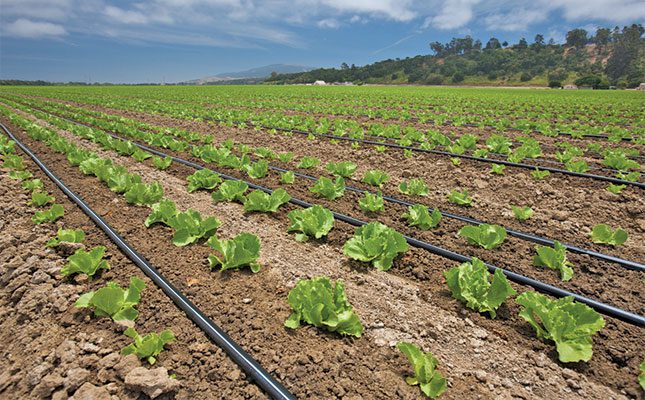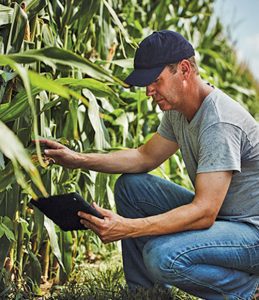The global agricultural sector is undergoing a major transformation in response to increasingly complex challenges. Climate change, rapid population growth, unpredictable weather patterns, labour shortages, and the escalating issue of water scarcity are placing immense pressure on farmers worldwide. In such a climate, the need for innovative, sustainable, and highly efficient farming solutions has never been greater.
Among the most promising responses to these challenges is the adoption of smart irrigation systems, particularly micro-irrigation technologies such as drip and sprinkler systems. These systems are not just about watering crops; they represent a fundamental shift in how we manage water, nutrients, labour, and productivity in agriculture.
Understanding Smart Irrigation
Smart irrigation refers to the use of advanced technologies to monitor and manage water delivery to crops in the most efficient way possible. These systems use real-time data, often gathered from sensors, weather forecasts, and soil moisture monitors, to precisely determine when, where, and how much water is needed.
Unlike traditional irrigation methods, which often result in water wastage through evaporation or runoff, smart irrigation ensures targeted application, reducing waste and boosting yield. Micro-irrigation, especially drip irrigation, is central to this transformation. By delivering water directly to the root zones of plants, it minimises evaporation, controls nutrient delivery, and enhances the overall health and productivity of crops.
Addressing Water Scarcity through Innovation
Water scarcity is a growing global crisis. According to the United Nations, by 2030, global demand for water is expected to outstrip supply by 40%. This stark reality has profound implications for agriculture, which accounts for over 70% of freshwater withdrawals worldwide. To ensure food security in the decades ahead, water-efficient technologies must be widely adopted.
Smart irrigation systems are a critical part of the solution. These systems enable farmers to use water more wisely by aligning irrigation schedules with actual crop needs and environmental conditions. As Eran Ossmy, president of Rivulis’ Micro Irrigation Division, puts it:
“Smart irrigation offers farmers an opportunity to take greater control of their irrigation systems, resulting in more precise water and fertiliser delivery to crops, reducing wastage and improving crop health.”
This precision not only conserves water but also improves yields, reduces operational costs, and enhances soil health—all while helping farmers adapt to increasingly unpredictable weather conditions.



Integrating Automation and Digital Control
One of the most powerful aspects of smart irrigation is automation. Modern irrigation systems are often connected to cloud-based platforms and mobile apps, allowing farmers to remotely control and monitor irrigation schedules.
This automation reduces reliance on manual labour—particularly beneficial in regions where farm labour is scarce or expensive. It also empowers farmers to respond quickly to changes in weather or soil conditions, ensuring crops receive the right amount of water at the right time.
“Automation empowers farmers to make real-time adjustments and optimise their irrigation schedules with ease,” Ossmy adds. “Controlling irrigation solutions remotely makes it possible for farmers to manage their operations more effectively.”
Making Smarter Decisions through Data
The integration of precision agriculture tools into smart irrigation systems allows for even greater efficiency. These tools collect and analyse data on variables such as soil moisture, plant growth, temperature, and humidity, providing farmers with actionable insights.
With these insights, farmers can:
- Fine-tune irrigation and fertiliser schedules
- Detect pest outbreaks or diseases early
- Evaluate crop performance
- Reduce input costs
By embracing a data-driven approach, farmers can plan better, allocate resources more efficiently, and increase overall farm profitability.
Exploring Alternative Water Sources
In regions where freshwater availability is limited, farmers are turning to alternative water sources to sustain their crops. These include:
- Recycled wastewater: When treated properly, this can be safely used for irrigation without harming crops or soil.
- Rainwater harvesting systems: Capturing and storing rainwater can supplement irrigation needs, especially during dry seasons.
- Desalinated water: Though energy-intensive, desalinated water is becoming a viable option in some coastal regions.
Innovative micro-irrigation systems are adaptable to these alternative sources, enabling sustainable farming practices even in water-stressed areas.
Regenerative Practices for Long-Term Sustainability
Smart irrigation can be significantly enhanced when combined with regenerative agricultural practices. These practices, which aim to restore and maintain healthy ecosystems, include:
- Crop rotation: Helps balance soil nutrients and reduce disease
- Organic composting: Improves soil structure and water retention
- Cover cropping: Reduces erosion and conserves moisture
- Reduced tillage: Preserves soil structure and microbial life
These methods improve soil fertility and increase the land’s capacity to retain water, reducing the need for frequent irrigation and promoting resilience against drought.
The Road Ahead: Toward a Smarter, Sustainable Future
As the global population grows and climate change continues to affect traditional farming practices, the need for smart, sustainable, and efficient agriculture becomes ever more critical. The future of farming depends on our ability to use technology to make better use of limited natural resources—especially water.
Smart irrigation, powered by automation, data analytics, and micro-irrigation technology, stands out as one of the most effective tools available to farmers today. It not only helps reduce water consumption but also boosts productivity, lowers costs, and enhances the long-term viability of agriculture.
As Eran Ossmy concludes:
“Solutions like smart irrigation and automation, when coupled with the efficiencies of drip irrigation, can help farmers navigate these complexities, offering economic and environmental benefits.”
With continued innovation, support, and investment in these technologies, we can build a more resilient, sustainable, and food-secure world—one drop at a time.